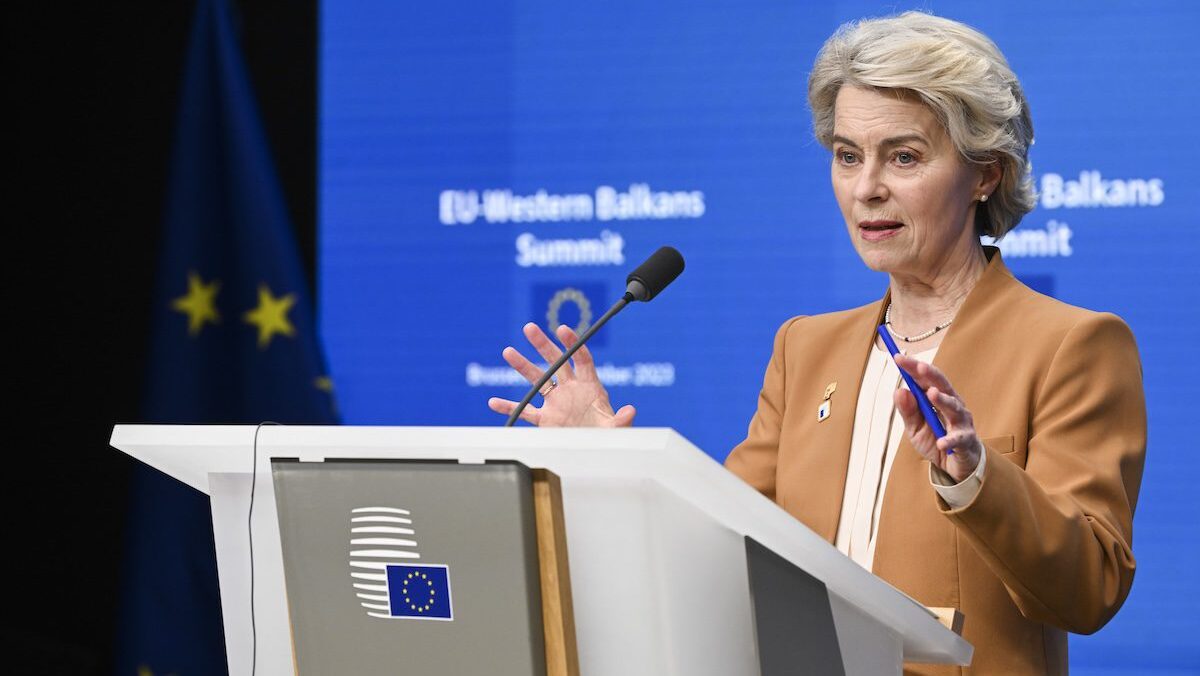
EU Commission President Ursula von der Leyen.
Photo: The European Union / European Council
Ahead of this week’s European Council Summit, which is likely to be dominated by immigration, European Commission president Ursula von der Leyen sent out a lengthy memo to member states outlining the EU executive’s ten-point plan to address the remaining “challenges” of the bloc’s migration strategy.
These are challenges that conservative lawmakers and countries like Poland and Hungary have been bringing up for years in their criticism of the EU’s new Migration Pact. However, mainstream parties have largely ignored these concerns and instead pushed their version of the pact forward, bypassing the unanimity principle last spring.
But even though most member states would not dare to challenge the Brussels consensus, the majority immediately realized upon adopting the Pact that it was not nearly enough to deter illegal migrants from trying to enter the EU, to prevent secondary movements within Schengen, or to fix the bloc’s laughable track record with returns. That is why more than half the EU countries began pushing for a joint deportation framework and an Italy-style outsourcing model for asylum procedures for half a year now, contrary to everything the Brussels elite has been saying for years.
Now, the Commission seems ready to budge under this pressure and to begin “plugging the gaps”—at least that’s what von der Leyen’s newly unveiled strategy would indicate. The document sent out to capitals late on Monday, October 14th, is still light on details, but it feels like a genuine effort for change, judging by the language. It is not only unusually harsh for the Commission chief, but it also uses the term “illegal migrants,” instead of the mainstream EU-speak “irregular migrants,” throughout the document.
The most important issue identified by the memo is undoubtedly Europe’s general inefficiency in returns. Von der Leyen recognizes that the bloc’s common migration policy can only work if rejected asylum seekers are promptly deported, “however, only around 20% of third country nationals ordered to leave have actually returned.”
There are many reasons for that, including lack of capacity and funds, but most countries agree that the bureaucratic hurdles that need to be overcome in order to deport someone from Europe, along with countries’ inability to detain migrants until their asylum process is complete, make it nearly impossible to locate illegal migrants within the open Schengen zone months after they entered.
This is why von der Leyen now proposes “a new legal framework” to step up the EU’s deportation capacity by building a common, streamlined approach. “We need to build a level of harmonization and trust that will ensure migrants who have a return decision against them in one country cannot exploit cracks in the system to avoid return elsewhere,” the Commission chief wrote.
Moreover, von der Leyen argued that the new framework must prioritize attention to migrant criminals and potential terrorists. Therefore, a further simplified legal and bureaucratic process is needed to make the deportations of “security-risk individuals” even easier, similar to what the Sweden Democrats (ECR) proposed last week.
With so many deadly attacks being carried out lately by failed asylum seekers who should have been deported long ago, it is good to see the Commission finally getting the picture. “Those who do commit crimes must know this will not be tolerated, no matter where they come from,” von der Leyen wrote. “This is an element that the Commission will address when reviewing the legislative framework to ensure solid rules for the removal of those who pose a serious threat to public order or internal security.”
Another interesting point in the document is called “designing innovative ways to combat illegal migration.” This includes extending and strengthening the concept of ‘designated safe third countries’ and applying it to transit countries along migration routes. Cooperation with these transit countries should be increased to combat migrant trafficking rings and accommodate asylum seekers, while visa rules could be used to force countries of origin to help address the issue.
But what is potentially the most important thing here is the possibility of “developing return hubs outside the EU,” for which the EU “will also be able to draw lessons from [the Italy-Albania protocol] in practice.” Essentially, this means the EU might copy Italian PM Giorgia Meloni’s agreement with Tirana—despite its constant criticism from the Left—under which Rome will be able to hold 36,000 asylum seekers in Albania, outside of EU borders, making it impossible for failed asylum seekers to disappear before their deportation orders are issued.
After a few months of delay, the two reception facilities in Albania are now operational, with the first ship of asylum seekers set to arrive on Wednesday. With the majority of EU countries now wanting a similar model to be implemented centrally, no doubt the ‘experiment’ will be followed closely. If it works, it might become standard practice for all of the EU, with locations set up in several non-EU countries.
What is even more interesting is that von der Leyen calls these prospective third-country facilities “return hubs,” which means not only would new arrivals end up there but also those identified as residing illegally in the EU and waiting to be deported. This is getting very close to the Swedish conservatives’ other proposal from this summer, the so-called ‘Deportation Pact,’ so it is good to see Brussels listening to its long-demonized right-wing community for once.
